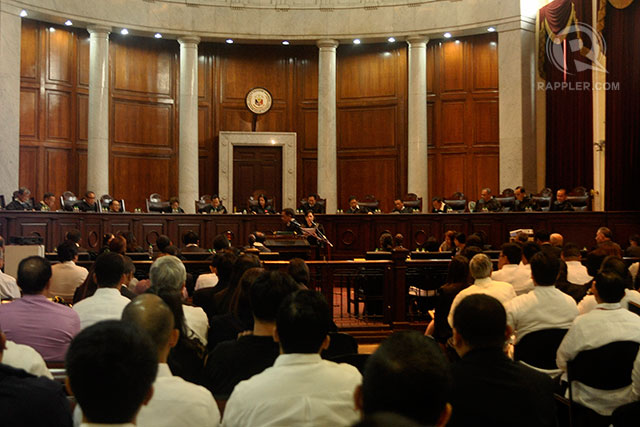SUMMARY
This is AI generated summarization, which may have errors. For context, always refer to the full article.

MANILA, Philippines – The Aquino government’s much-debated Disbursement Acceleration Program (DAP) will be placed in the back burner, as it has already served its purpose of stimulating the economy.
According to the government’s lawyer Solicitor General Francis H Jardeleza, this renders the 9 petitions questioning the constitutionality of DAP before the Supreme Court (SC) essentially moot.
In an interview with reporters prior to the Tuesday, January 28, SC oral arguments on DAP, Jardeleza said the pump-priming aim of the program had already been achieved. (READ: Palace turn to defend DAP before Court)
Unless the country faces a similar situation of “sluggish” government spending as in 2011 when the DAP was introduced, the DAP will not be used at all.
Jardeleza added that the “savings” in the state budget – where DAP releases are sourced – has already been diverted to tackling recent disasters that struck the country. (Watch the livestream of the DAP oral arguments here)
Revamp of economy needed in 2011
The DAP is a spending program initiated by President Benigno Aquino III in 2011 meant to boost the economy, after slow disbursements caused the country’s Gross Domestic Product (GDP) growth to slow down to just 3.6% that year.
Through DAP, the President is able to augment appropriations to items already outlined in the General Appropriations Act with savings from vacancies in government personnel and from projects that have already been abandoned or were finished but at a lesser cost than appropriated.
The diversion of unused money from slow-moving projects to fast-disbursing ones is meant to ramp up government spending, the administration maintains.
It was questioned by various quarters, following a privilege speech by Senator Jinggoy Estrada in 2013 exposing the release of disbursements to select senators.
The releases were issued after the impeachment trial of Former Chief Justice Renato Corona, raising fears that they were used as bribes to senators to vote for Corona’s impeachment. Corona was an appointee of the previous administration disfavored by Aquino.
Approved by the President
The Solicitor General added that the President approved the releases under DAP, negating a point raised by Senior Justice Antonio Carpio during the first day of oral arguments. (READ: DAP orals: DBM moved funds sans President’s approval)
Jardeleza said his party has submitted on Tuesday to the High Court evidence proving Aquino’s imprimatur of the controversial program.
Copies of 7 memorandums – all signed by the President since the start of the pump-priming initiative – were provided to the Court, said Jardeleza.
In his speech before the High Court, Jardeleza said the disbursements for the 116 projects funded through DAP were all approved by Aquino.
The projects, he clarified, were budget items already within the General Appropriations Act.
Extremely beneficial
The DAP is not only legal, said Jardeleza, but was extremely beneficial in spurring economic growth.
Budget Secretary Butch Abad, in his speech before the SC, said government spending increased by 32.5% year-on-year during the 4th quarter of 2011.
Abad also added that the country’s debt-servicing decreased from 20% in 2010 to 15.6% in 2014, partly due to DAP.
Critical government projects were funded through DAP, Jardeleza said, including the Department of Science and Technology’s nationwide hazards assessment dubbed Project NOAH. The project automates data gathering during disasters.
“It is a crucial component of the country’s early warning system against floods,” said Jardeleza of Project NOAH, which had “countless lives saved.”
Through DAP, he added, 93,500 teachers were provided with social insurance.
Rural citizens from 2,245 sitios were also provided with electricity through DAP, he said. – Rappler.com
Add a comment
How does this make you feel?
There are no comments yet. Add your comment to start the conversation.